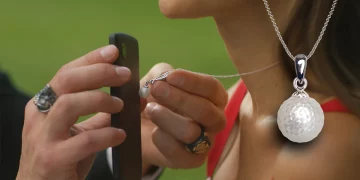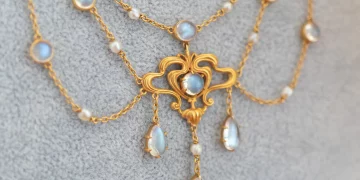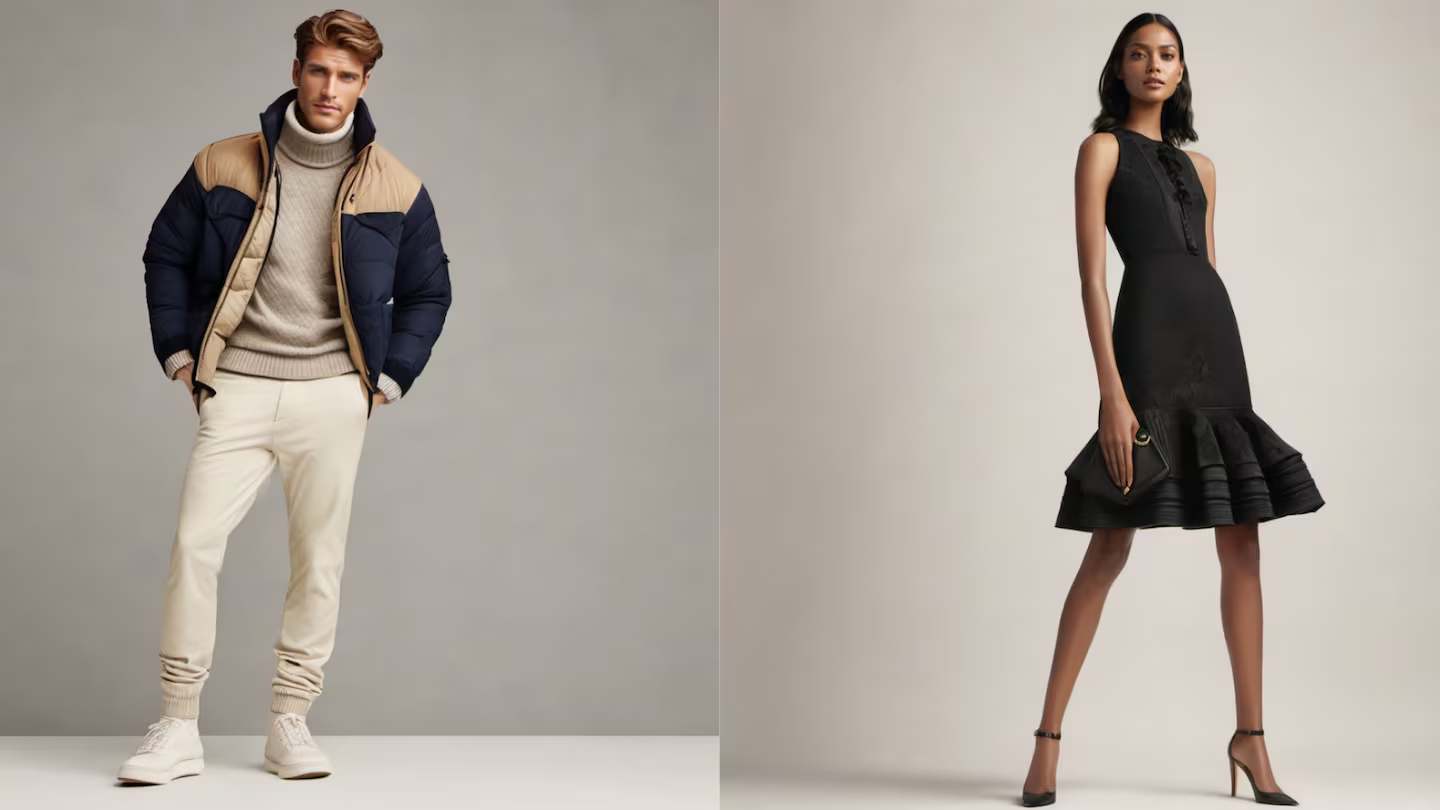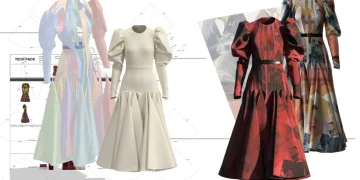For years, diamonds have reigned supreme as the quintessential symbol of luxury and wealth in the jewelry world. But in recent times, there’s been a noticeable shift in the spotlight. Colored gemstones, once overshadowed by their clear, sparkling counterparts, are making a dramatic return to the forefront of jewelry design. From the deep blues of sapphires to the vibrant reds of rubies, the appeal of colored stones is more apparent than ever, as both designers and consumers are rediscovering their allure.
So, what does this revival of colored gemstones mean for the future of jewelry trends? Will they dominate the luxury jewelry market, or is this simply a passing phase in the ongoing evolution of fine jewelry?
In this article, we’ll explore the reasons behind the resurgence of colored gemstones, examine the current market dynamics surrounding them, and analyze how this trend might shape the future of jewelry design. We’ll also discuss why these gems are becoming the new darlings of the jewelry world and what this means for both designers and consumers.
1. The Resurgence of Colored Gemstones: A Shift in Consumer Preferences
In recent years, the demand for colored gemstones has been steadily increasing, and it’s not hard to see why. As consumer preferences evolve, there’s a clear shift from traditional diamond-centered designs toward a broader palette of rich hues and vibrant shades.
1.1 The Desire for Uniqueness and Personal Expression
In an era where individuality and personalization are highly valued, colored gemstones provide a way for consumers to express their personal style and create pieces that are truly one-of-a-kind. Unlike diamonds, which often signify uniformity and tradition, colored gemstones offer infinite variety in terms of colors, cuts, and characteristics. This versatility is appealing to modern consumers who seek to reflect their unique identities in their jewelry choices.
- Gemstones like emeralds, sapphires, rubies, and topaz can be chosen based on personal meaning, astrological beliefs, or simply the wearer’s aesthetic preferences. Each colored gemstone has its own symbolism, which can add emotional depth and significance to the piece.
- As a result, colored gemstones are gaining popularity in engagement rings, where they offer an alternative to the traditional diamond, providing couples with the chance to choose a stone that resonates more deeply with their personal story.
1.2 Rising Interest in Sustainable and Ethical Jewelry
As consumers become more aware of the ethical and environmental implications of their purchasing decisions, the ethical sourcing of gemstones is becoming an important factor. While diamond mining has come under intense scrutiny for its environmental impact and unethical labor practices, colored gemstones offer a more diverse range of sustainable options.
- Many colored gemstones, such as sapphires, rubies, and emeralds, can be sourced from ethical and traceable origins, and there’s been a rise in lab-grown colored gemstones as a more sustainable alternative to mined stones. These developments align with the growing trend of conscious consumerism, where buyers prioritize environmental responsibility and social ethics in their purchasing decisions.
1.3 A Response to the Traditional Diamond Market
Another factor driving the return of colored gemstones is the growing fatigue with the diamond monopoly. While diamonds have historically been regarded as the pinnacle of luxury, many consumers, particularly younger buyers, are increasingly seeking alternatives that feel more authentic and personal. Colored gemstones allow for greater creativity and flexibility in design, offering an escape from the conventionality of diamonds.
- In addition, colored gemstones are often more affordable than diamonds, giving consumers access to luxury that doesn’t come with the price tag of a diamond. As millennials and Gen Z begin to dominate the luxury market, their preference for more diverse and meaningful stones is becoming evident.
2. How Colored Gemstones Are Reclaiming Their Place in Jewelry Design
As colored gemstones grow in popularity, jewelry designers are finding new ways to incorporate these stones into modern and innovative designs. The return of gemstones is not just a trend—it’s an exciting opportunity for designers to explore new creative directions while embracing the rich history and symbolism of these stones.
2.1 A New Era of Bold, Vibrant Designs
Colored gemstones are providing designers with the opportunity to create bold, vibrant, and expressive pieces. From large statement rings to delicate earrings, gemstones are now taking center stage in luxury jewelry designs. These stones, with their brilliant colors and unique characteristics, provide a canvas for designers to experiment with a wider range of shapes, cuts, and settings.
- We are seeing a revival of vintage-style designs featuring art deco motifs, where colored gemstones are paired with diamonds to create luxurious contrasts of color. This blend of old-world glamour with new-world creativity is resonating with both contemporary consumers and vintage enthusiasts.
- Additionally, designers are using unconventional combinations of gemstones in jewelry, pairing emeralds with sapphires, rubies with amethysts, and more, to create unexpected color combinations that make the pieces feel fresh and exciting.
2.2 Incorporating Gemstones Into Everyday Jewelry
Colored gemstones are also making their way into everyday jewelry pieces. While statement necklaces and bold rings were once the norm for colored gemstones, designers are now integrating them into more versatile, everyday designs.
- Simple gemstone studs, delicate gemstone bracelets, and customizable stacking rings are becoming more common, allowing consumers to wear colored gemstones as part of their daily outfits without feeling too over-the-top. This trend reflects the growing desire for practical luxury—pieces that can be worn regularly and styled effortlessly.
3. Why Colored Gemstones Are Becoming the New Darlings of the Jewelry World
The comeback of colored gemstones signals a new era in jewelry, where the bold, vibrant, and distinctive are no longer reserved for the exceptional few. But what exactly is driving their rise, and why are they becoming the new darlings of the jewelry world?
3.1 The Allure of Diversity and Rarity
Colored gemstones are inherently diverse. Each gemstone is unique in color, clarity, and character, making it irreplaceable in its own right. Unlike diamonds, which can be easily replicated and standardized, colored gemstones offer an individual and rare beauty that makes each piece of jewelry feel like a true work of art.
- Emeralds, with their deep green hues, and rubies, with their passionate red tones, are symbols of both rarity and timeless elegance. On the other hand, sapphires, known for their stunning blue shades, offer a sense of classic sophistication while also coming in a range of colors, from pink to yellow and even green. This diverse palette makes it easier for designers to cater to a wide range of tastes, from classic elegance to modern flair.
3.2 The Emotional and Symbolic Appeal of Gemstones
Each colored gemstone has its own meaning and symbolism, which adds an emotional layer to jewelry. Consumers are increasingly drawn to stones that represent more than just luxury—emotional connections and personal significance are playing a larger role in the buying process.
- For instance, emeralds are often associated with rebirth, renewal, and growth, making them ideal choices for anniversary gifts or milestone celebrations. Sapphires, on the other hand, are seen as symbols of wisdom, loyalty, and faithfulness, making them a popular choice for engagement rings. Rubies symbolize passion and vitality, while amethysts are linked to calmness and spiritual healing.
- As more people seek meaningful jewelry, gemstones that carry personal significance are becoming even more sought after.

4. Colored Gemstones in the Future: A Lasting Trend or Passing Fancy?
As colored gemstones continue to gain momentum, it’s clear that they have carved out a lasting place in the jewelry industry. The growing emphasis on personal expression, ethical sourcing, and unique designs means that colored gemstones are here to stay—and may even surpass diamonds in some aspects.
4.1 The Future of Gemstones in Fine Jewelry
Looking ahead, colored gemstones will likely play an even larger role in shaping jewelry trends. We can expect to see more experimentation with gemstone combinations, cuts, and settings, as well as an increasing emphasis on customization.
- As lab-grown gemstones become more prevalent, consumers will have greater access to affordable, sustainable, and ethically sourced options.
- We’re also likely to see the rise of more gemstone-focused collections, where brands offer designs centered around individual stones rather than a mixture of diamonds and gemstones. This will enable consumers to choose jewelry that speaks to their personal aesthetic and values.
4.2 Will Colored Gemstones Become the New Standard for Luxury Jewelry?
While diamonds will continue to hold a place of prominence in luxury jewelry, colored gemstones are quickly gaining ground. As the demand for more diverse, meaningful, and sustainable jewelry grows, it’s clear that colored gemstones are primed to be the new stars of the jewelry world—especially among younger, more conscious consumers.
Conclusion: A New Era of Colored Gemstones in Jewelry Design
Colored gemstones are making a dramatic return to the jewelry scene, and it’s clear that this resurgence is not just a fleeting trend. With their diversity, emotional significance, and ethical appeal, these gems are becoming the new darlings of the jewelry world. As designers continue to push the boundaries of what is possible with colored gemstones, the future looks bright—and colorful—for the jewelry industry. The future of luxury is not just about diamonds anymore; it’s about expressing individuality, sustainability, and the rich beauty of colored stones.

















































